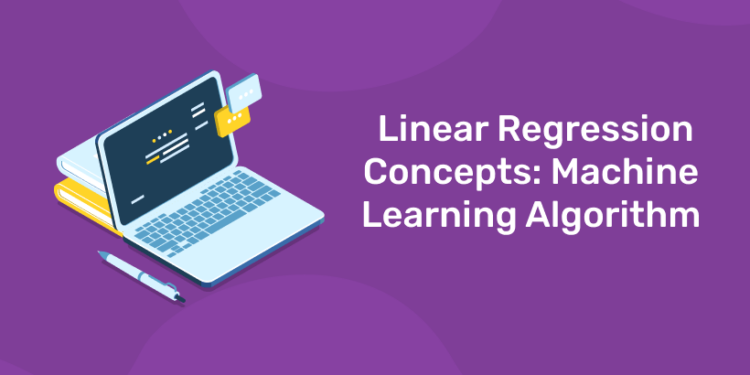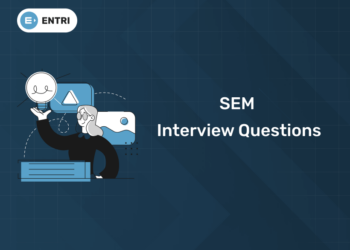Table of Contents
Recently, artificial intelligence has gained popularity. Individuals from a variety of areas are attempting to use AI to simplify their tasks. Machine learning algorithms are the driving force behind AI’s pervasive use. You have come to the proper place if you want to understand ML algorithms but haven’t started out. A linear regression algorithm is the fundamental algorithm that each machine learning enthusiast begins with. As a result, we will follow suit since it serves as a foundation for us to expand upon and learn different ML techniques.
Regression is a technique for simulating a goal value using separate predictors. The main applications of this technique are forecasting and determining the causal connections between variables. The number of independent variables and the nature of the relationship between the independent and dependent variables are the main determinants of how regression algorithms differ. With this article we are explaining linear regression and some important statistical terms you need to understand while using the regression model.
Ready to take your data science skills to the next level? Sign up for a free demo today!
Regression Models
A machine learning algorithm based on supervised learning is linear regression. It executes a regression operation. Regression uses independent variables to model a goal prediction value. It is mostly used to determine how variables and forecasting relate to one another. Regression models vary according to the number of independent variables they use and the type of relationship they take into account between the dependent and independent variables. The dependent variable in a regression has many different names. It can be referred to as a regressand, endogenous variable, criteria variable, or outcome variable. The independent variables may also be referred to as predictor variables, regressors, or exogenous variables.
Data Preparation for Linear Regression
Linear Assumption- The assumption underlying linear regression is that your input and output have a linear relationship. Nothing else is supported by it. Even though it may seem obvious, it is a good thing to keep in mind when you have a lot of qualities. To make the relationship linear, the data may need to be transformed (e.g. log transform for an exponential relationship).
Noise Removal- The assumption behind linear regression is that your input and output variables are both clean. Use data cleansing procedures that enable you to more clearly reveal and define the signal in your data. This is crucial for the output variable, and if at all possible, you should get rid of outliers there.
Collinearity Elimination- When your input variables are highly correlated, your results will be overfit using linear regression. With your input data, you may think about computing pairwise correlations and eliminating the most correlated.
Gaussian Distribution- If your input and output variables are distributed according to a Gaussian distribution, linear regression will produce more accurate predictions. You might gain something by applying transforms to your variables to give them a more gaussian-looking distribution, such as log or BoxCox.
Regularization- Using standardization or normalization to rescale the input variables will typically result in more accurate predictions from linear regression.
Calculating Different Statistical Properties in Regression
Simple Linear Regression: When there is just one input, we can use statistics to estimate the coefficients of simple linear regression. You must perform the necessary statistical analysis on the data to determine means, standard deviations, correlations, and covariance. To traverse the data and do statistical calculations, it must all be accessible.
Note: Linear Equation: Y=(a_0 + a_1)*X
Although entertaining as an exercise in Excel, this isn’t particularly practical.
Gradient Descent Method: When there are one or more inputs, you can employ a technique of iteratively minimizing the model’s error on your training data to optimize the coefficient values.
Gradient Descent is the name of the procedure, and it functions by starting with random values for each coefficient. Each set of input and output values is used to calculate the sum of the squared errors. The scale factor utilized is the learning rate, and the coefficients are modified to minimize the error. Until a minimum sum squared error is reached or no further improvement is achievable, the process is repeated.
The magnitude of the improvement step to be taken on each iteration of the procedure must be determined by a learning rate (alpha) parameter when employing this method.
Because it is relatively simple to comprehend, linear regression models are frequently used to teach gradient descent. In actual use, it is helpful when you have a dataset with a very high number of rows or columns that would not fit in memory.
Least Square Method: We can use Ordinary Least Squares to estimate the coefficient values when we have several inputs.
The aim of the Ordinary Least Squares method is to reduce the total squared residuals. This means that given a regression line across the data, we square the distance between each data point and the regression line and add the squared errors for all the data points. Ordinary least squares attempts to minimize this amount.
In this method, the data is treated as a matrix, and the ideal coefficient values are estimated using operations from linear algebra. In order to fit the data and do matrix operations, you must have access to all of the data and sufficient memory.
It is uncommon to use the Ordinary Least Squares method on your own unless it is a linear algebra exercise. You are more likely to use a linear algebra library’s approach. Calculating this process takes relatively little time.
Cost Function: The optimal values for a 0 and a 1 that would produce the best fit line for the data points can be determined using the cost function. We transform this search problem into a minimization problem because we want to minimize the difference between the predicted value and the actual value since we want the best values for a 0 and a 1. The performance of a linear regression model is gauged by the cost function, which optimizes the regression coefficients or weights. The cost function is used to determine how accurately the input variable is mapped to the output variable. The Hypothesis function is another name for this mapping function.
The cost function known as Mean Squared Error (MSE) in linear regression measures the average squared error between the predicted and actual values. We will alter the values of a0 and a1 using the MSE function so that the MSE value settles at the minimum. To ensure that the cost function value is least, these parameters can be computed using the gradient descent approach.
Looking for a Data Science Career? Explore Here!
Wrap Up
With this blog we have covered some basic Linear Regression aspects. We have covered how to prepare the data for linear regression and some important statistical properties that one should understand while doing linear regression. The optimal values for a0 and a1 are sought after by the linear regression algorithm in order to identify the best fit line, which should also have the lowest error. The optimal values for a0 and a1 are determined using the Mean Squared Error (MSE) cost function in linear regression, which produces the best fit line for the data points. We will alter the values of a0 and a1 using the MSE function so that the MSE value settles at the minimum. Update a0 and a1 using gradient descent to reduce the cost function (MSE)
Free Tutorials To Learn
| SQL Tutorial for Beginners PDF – Learn SQL Basics | |
| HTML Exercises to Practice | HTML Tutorial | |
| DSA Practice Series | DSA Tutorials | |
| Java Programming Notes PDF 2023 |
| Related Articles | |
| Best Data Science Skills | Machine Learning Basics |
| EDA Steps, Importance | EDA Techniques |
| Data Analysis | Importance of Data Preprocessing in ML |










